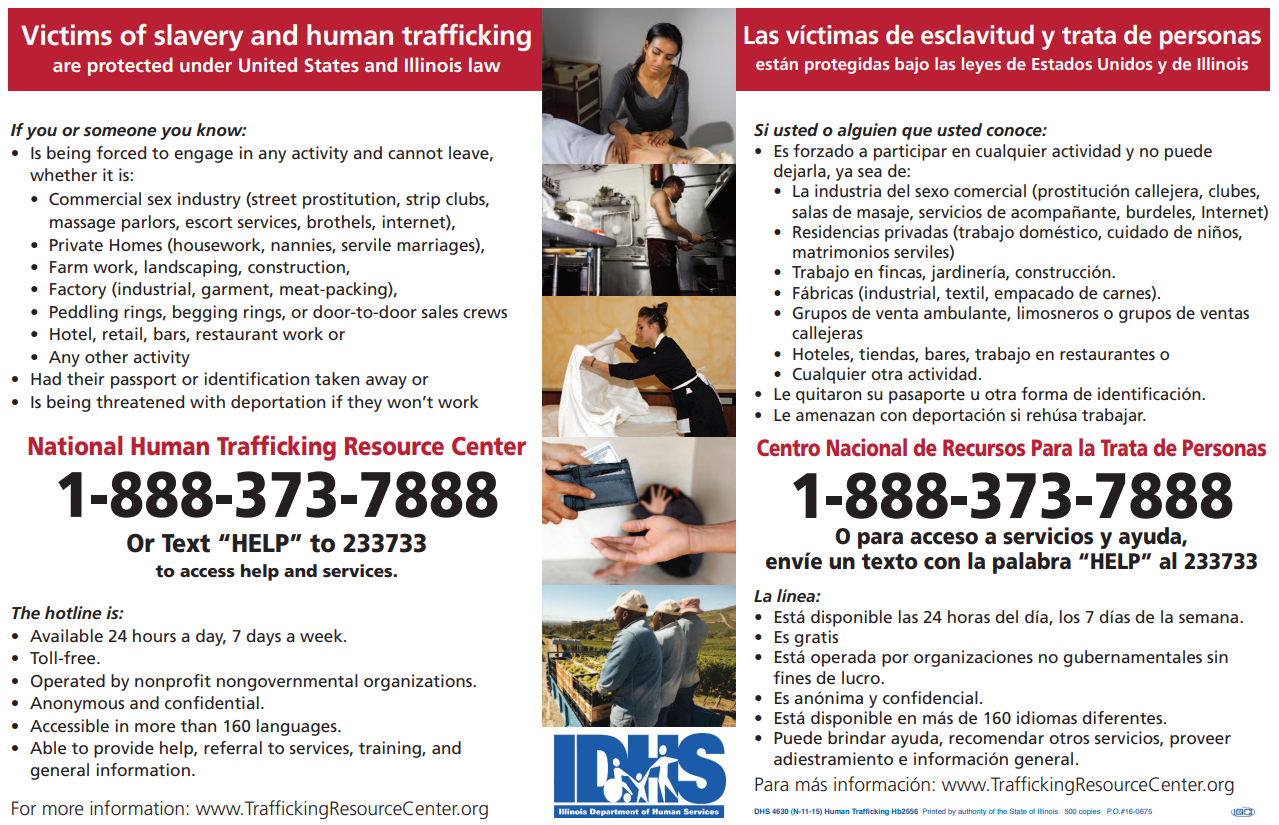Written by: Alex Franiek, MBChB, (NUEM ‘26) Edited by: Kelsey Green, MD (NUEM ‘23)
Expert Commentary by: Julia Geynisman-Tan, M.D., FACOG, FACS
What is Human Trafficking?
United States law defines human trafficking under The Trafficking Victims Protection Act of 2000 as the use of force, fraud, or coercion to procure a person into commercial sex, labor or service industries by force, fraud, coercion (Victims of Trafficking and Violence Protection Act of 2000, 2000). While the term ‘trafficking’ might imply movement, individuals do not need to be transported to fall within the definition (Shandro et al., 2016). In 2021, the International Labour Organization estimated that 49.6 million individuals were current victims of human trafficking, which includes those working in manufacturing, construction, agriculture and the commercial sex trade (ILO et al., 2022).
A misconception is that human trafficking predominantly affects less developed nations – that it is a problem which is distinct from the United States and its residents. Conversely, approximately half of victims are from industrialized countries (Shandro et al., 2016).
Context in Healthcare
Up to 88% of victims have accessed healthcare during their time as trafficked individuals (Polaris, 2018). A 2014 study which surveyed 125 trafficking survivors found the most frequently visited healthcare facility was the hospital/ Emergency Room with 63.3% receiving treatment there (Levin et al., 2014).
Despite their unique position to identify and assist victims, very few healthcare workers may properly identify these patients, know how to address them and subsequently assist them; this shortcoming is primarily due to training deficiency (Lee et al., 2021). To contextualize, the state of Illinois does not presently regulate human trafficking education for healthcare professionals. As of April 2021, the state only requires certain businesses, including Emergency rooms, to display a notice showing the National Human Trafficking Resource Center and phone number in a ‘conspicuous’ area visible to the public and employees (Human Trafficking Resource Center Notice Act, 2016). However, this is expected to change in January 2026, when healthcare professionals will be required to complete training as a part of Continuing Medical Education.
Model notice produced by Illinois Department of Labor
Approach to Human Trafficking in the Emergency Department
Victims do not often openly reveal their trafficking situation to healthcare professionals. Consequently, it is imperative that Emergency Medicine physicians be deliberate in their approach to suspected victims. The goal of an Emergency Medicine doctor is not to remove the patient from their trafficking situation, or even to obtain a disclosure from the patient. Rather, their aim is to support, educate and offer accessible resources. (National Human Trafficking Resource Center, 2016).
There is no typical presentation of human trafficking, and patients present with any physical, psychological and/or social complaint. Health problems may be the consequence of factors related to trafficking, such as food poverty, violence, hazardous working conditions and sleep deprivation (Dovydaitis, 2010). Conversely, victims of human trafficking may present with complaints that have no apparent correlation with their trafficking situation. Regarding reproductive health, common presentations include sexually transmitted infections, repeated pregnancies and terminations of pregnancy. Somatization can be an indication of trafficking and abuse, for example, headaches and abdominal pains without physical explanation. Physical signs of trafficking may be work-related or the result of non-accidental trauma, such as fractures in mixed healing stages, or burns and tattoos (often signifying branding). Behaviorally, victims may present with symptoms of depression, anxiety, and panic attacks (Davis & Taylor, 2020). For a comprehensive list of indicators, please refer to the following resource document produced by the National Human Trafficking Resource Center: https://humantraffickinghotline.org/resources/what-look-healthcare-setting (National Human Trafficking Resource Center, 2016):
Best Practices for Interviewing Suspected Victims of Human Trafficking
If you suspect that a patient might be a victim of human trafficking, employ the following consultation tactics (McAmis et al., 2020).
Separate the patient from their companion
Ideally find a private and quiet location
Interview the patient in their native language using an interpreter
Do not rush the consult
Consider that the patient may be more comfortable speaking with someone of the same sex, similar ethnicity, or age
Ensure confidentiality unless the situation necessitates state mandatory reporting
Assess safety: “Do you feel safe right now? Do you feel in danger?”
Ask direct questions (and don’t be afraid to ask them!):
What is your living situation like?
Can you describe your working conditions?
If you wanted to, could you quit your job?
Have you ever had difficulty accessing food, water, or medicine?
Have you ever been threatened at work?
Does someone else take money that you earn?
Do you keep your own identification documents (passport, driver’s license)?
Have you ever been forced to have sex with someone? Have you ever been forced to have sex in exchange for money or favors?
Summary
Emergency Medicine physicians have a distinct opportunity to identify and treat victims of human trafficking. This piece focused specifically on understanding the scope of human trafficking, its context in healthcare, and tools to identify and approach suspected victims. For further information on ways to support and treat victims after identification, please visit The National Human Trafficking Hotline (https://humantraffickinghotline.org/).
References
Davis, L., & Taylor, B. Concealed but Not Forgotten: Human Trafficking and the ED. Emergency Medicine Residents’ Association. 2020. https://www.emra.org/emresident/article/trafficking-2020/. Accessed on October 21, 2022.
Dovydaitis, T. Human trafficking: The role of the health care provider. Journal of Midwifery and Women’s Health. 2020;55(5):462-467.
Global Estimates of Modern Slavery: Forced Labour and Forced Marriage. International Labour Organization. 2022. https://www.ilo.org/wcmsp5/groups/public/@dgreports/@dcomm/documents/publication/wcms_575479.pdf. Accessed on October 21, 2022.
Human Trafficking Resource Center Notice Act. https://healtrafficking.org/wp-content/uploads/2021/01/Human-Trafficking-and-Health-Care-Providers_Legal-Requirements-for-Reporting-and-Education.pdf. Accessed on October 21, 2022.
Lee H, Geynisman-Tan J, Hofer S, et al. The Impact of Human Trafficking Training on Healthcare Professionals’ Knowledge and Attitudes. Journal of Medical Education and Curricular Development. 2021;8:23821205211016523.
Levin J, Funk M, Macdonald C, et al. Annals of Health Law. Annals of Health Law. 2014:23(1):61-91.
McAmis NE, Mirabella AC, McCarthy EM, Cama CA. Is Your Patient a Victim of Human Trafficking?. Emergency Medicine Residents’ Association. 2020. https://www.emra.org/emresident/article/human-trafficking-signs/. Accessed on October 21, 2022.
On-Ramps, Intersections, and Exit Routes: A Roadmap for Systems and Industries to Prevent and Disrupt Human Trafficking. Polaris. 2018. https://polarisproject.org/wp-content/uploads/2018/08/A-Roadmap-for-Systems-and-Industries-to-Prevent-and-Disrupt-Human-Trafficking-Health-Care.pdf. Accessed on October 21, 2022.
Profits and property: the economics of forced labor. International Labour Organization. 2014.https://www.ilo.org/wcmsp5/groups/public/---ed_norm/---declaration/documents/publication/wcms_243391.pdf. Accessed on October 21, 2022.
Shandro J, Chisolm-Straker M, Duber HC, et al. Human Trafficking: A Guide to Identification and Approach for the Emergency Physician. Annals of Emergency Medicine. 2016;68(4): 501-508.e1.
Victims of Trafficking and Violence Protection Act of 2000 U.S.C. § 112 (2000)
(775 ILCS 50/5) Human Trafficking Resource Center Notice Act, Legislative Information System for Illinois General Assembly § Sec. 5 2016. https://www.ilga.gov/legislation/ilcs/ilcs3.asp?ActID=3639&ChapterID=64. Accessed on October 21, 2022.
What to Look for in a Healthcare Setting. National Human Trafficking Resource Center. 2016. https://humantraffickinghotline.org/resources/what-look-healthcare-setting. Accessed on October 21, 2022.
Expert Commentary
Human trafficking is not only a law enforcement issue - it is a public health issue in which interpersonal violence and abuse leads to multi-system health outcomes. Trafficking survivors sometimes present to healthcare centers because of acute injuries directly related to their trafficking (burns, gunshot wounds, sexual assault, injuries from machinery, etc) but more often, they present for common or chronic health conditions that don't raise any suspicions. Many survivors describe being seen in emergency rooms for complaints of palpitations, UTIs or abdominal pain and being discharged without any discussion of their social history. For this reason, the red flags referenced above from the Polaris website, are important for every physician to understand. Many of the red flags are social-emotional ones: a patient who is withdrawn, fearful, constantly texting with someone or belligerent and demanding.
The post describes some important first steps in getting disclosure - finding a private setting. This can be in a bathroom, an xray suite, during a procedure (necessary or faked to create privacy). Disclosure or significant suspicion of trafficking should lead to a social work consult to better understand a patient's needs for safety, placement, law enforcement involvement etc. Consider a social admission - sometimes a patient may be medically cleared for discharge but could use a night in the hospital with a warm meal, a hot shower, a security team, an alias and good sleep. If nothing else, document the suspicion for trafficking after the patient has left the ED and hide the notes - this way the diagnosis will not be present on AVS reports for anyone who is checking on the patient's status.
Most of all, avoid the rescue fantasy. Survivors leave their trafficking situation as a result of their own resilience, not because of our efforts. There are unfortunately too few services for survivors of this kind of violence so the road after they leave the life is not an easy one and they need to be prepared.
Julia Geynisman-Tan, M.D., FACOG, FACS
Associate Professor, Obstetrics & Gynecology
Division of Urogynecology and Reconstructive Pelvic Surgery
Fellowship Program Director
Northwestern Prentice Women's Hospital
How To Cite This Post:
[Peer-Reviewed, Web Publication] Franiek, A. Green, K. (2025, July 10). Human Trafficking in the Emergency Department. [NUEM Blog. Expert Commentary by Geynisman-Tan, J.]. Retrieved from http://www.nuemblog.com/blog/human-trafficking.







